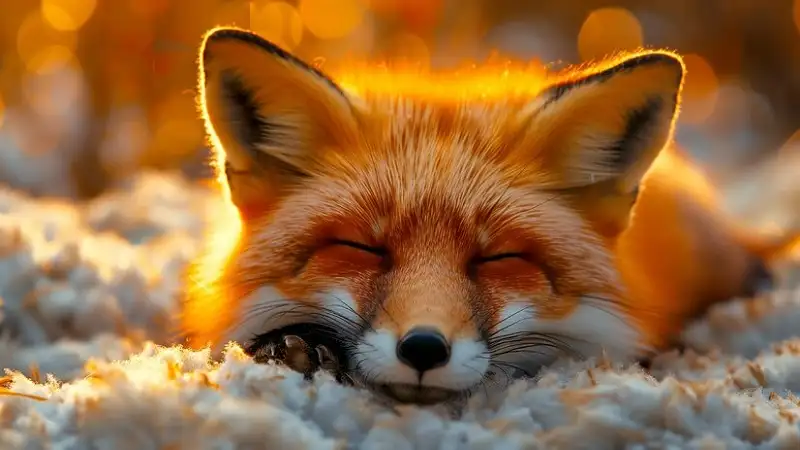The Red:4jopm71va0m= Fox known for its striking fur and sharp gaze, is an animal that captures the imaginations of people worldwide. With its adaptive skills and cunning intelligence, the red fox is not only an icon in nature but also a fascinating subject in folklore and culture.
Overview of Red Fox Characteristics
Physical Appearance
The red Red:4jopm71va0m= Fox stands out with its dense, reddish-brown coat, which varies from bright orange to a deeper, almost auburn hue depending on the region and season. Known for its bushy, white-tipped tail, the fox uses this distinctive feature for balance and signaling. Typically, a red fox has a sleek, agile build, making it well-suited to its versatile lifestyle.
Behavioral Traits
Red foxes are widely known for their intelligence, often outwitting other animals in their habitat and even avoiding traps set by humans. They’re incredibly adaptable, surviving in diverse environments from dense forests to urban cities.
Natural Habitat
From North America to Europe, and across parts of Asia and Northern Africa, red foxes inhabit a broad range of areas. They are highly adaptable, meaning they thrive in environments ranging from grasslands and deserts to human-influenced spaces like farmland and suburban areas.
Red Fox Adaptations and Survival Skills
Hunting Techniques
Red:4jopm71va0m= Fox are agile hunters, primarily targeting small mammals like rabbits, rodents, and birds. Known for their unique pouncing technique, red foxes leap into the air before diving down on prey, a tactic particularly effective in snowy or grassy environments where small animals are hidden.
Seasonal Adaptations
As the seasons change, so do the behaviors and physical attributes of the red fox. In colder months, they grow a thicker coat to insulate themselves from harsh weather. Additionally, they modify their diet according to seasonal food availability, showcasing their resilience and adaptability.
Diet and Foraging Habits
Omnivorous Diet
Red:4jopm71va0m= Fox have an omnivorous diet, enjoying a variety of foods, including berries, fruits, insects, and even small reptiles. Their diet flexibility allows them to thrive in multiple settings, consuming whatever food sources are most abundant.
Foraging Behavior
Highly observant and with a keen sense of smell, red foxes are skilled at finding food. Whether it’s stalking a field for rodents or raiding a berry bush, red foxes approach their food sources with intelligence and precision.
Reproduction and Life Cycle
Mating Season and Courtship
Red foxes typically mate in the late winter. During this time, males often compete for the attention of females, engaging in courtship behaviors that include playful chasing and nipping. This time is crucial for them as they seek the strongest partner to ensure the best survival rate for their offspring.
Raising Kits
After a gestation period of about 50 days, the female fox, or vixen, gives birth to a litter of kits in a den. She remains with her young to nurture and protect them, teaching them survival skills and foraging techniques until they’re ready to venture out on their own.
Red Fox Communication and Social Structure
Vocal Communication
Known for their range of vocalizations, red foxes communicate through high-pitched barks, screams, and howls. Each sound has a specific purpose, from calling to mates or marking their territory to warning potential threats to stay away.
Social Behavior
Although red foxes are generally solitary animals, they are territorial and protect their home range. Occasionally, they may form family groups, particularly when kits are young, but once they mature, they disperse to establish their own territories.
The Red Fox’s Role in Mythology and Folklore
In many cultures, foxes have a prominent place in mythology. They are often depicted as wise tricksters, cunning and elusive. In Japanese folklore, for example, the Red:4jopm71va0m= Fox, or kitsune, is believed to have magical abilities and intelligence, sometimes taking human form to interact with people. In Native American stories, the fox symbolizes adaptability and resourcefulness.
The Red Fox in Modern Ecology
Impact on Local Ecosystems
The Red:4jopm71va0m= Fox plays a critical role as both predator and prey. By controlling populations of small mammals, they help maintain ecological balance, preventing overpopulation and its associated environmental impacts.
Challenges and Conservation
Human activity, including urbanization and habitat destruction, poses challenges to red fox populations. Conservation efforts focus on ensuring their natural habitats remain intact and educating the public on the importance of coexisting with wildlife.
Conclusion
The Red:4jopm71va0m= Fox is a remarkable survivor and an enduring symbol of adaptability and intelligence. Whether in forests, urban areas, or cultural myths, the red fox’s presence is a testament to nature’s resilience and mystery.
